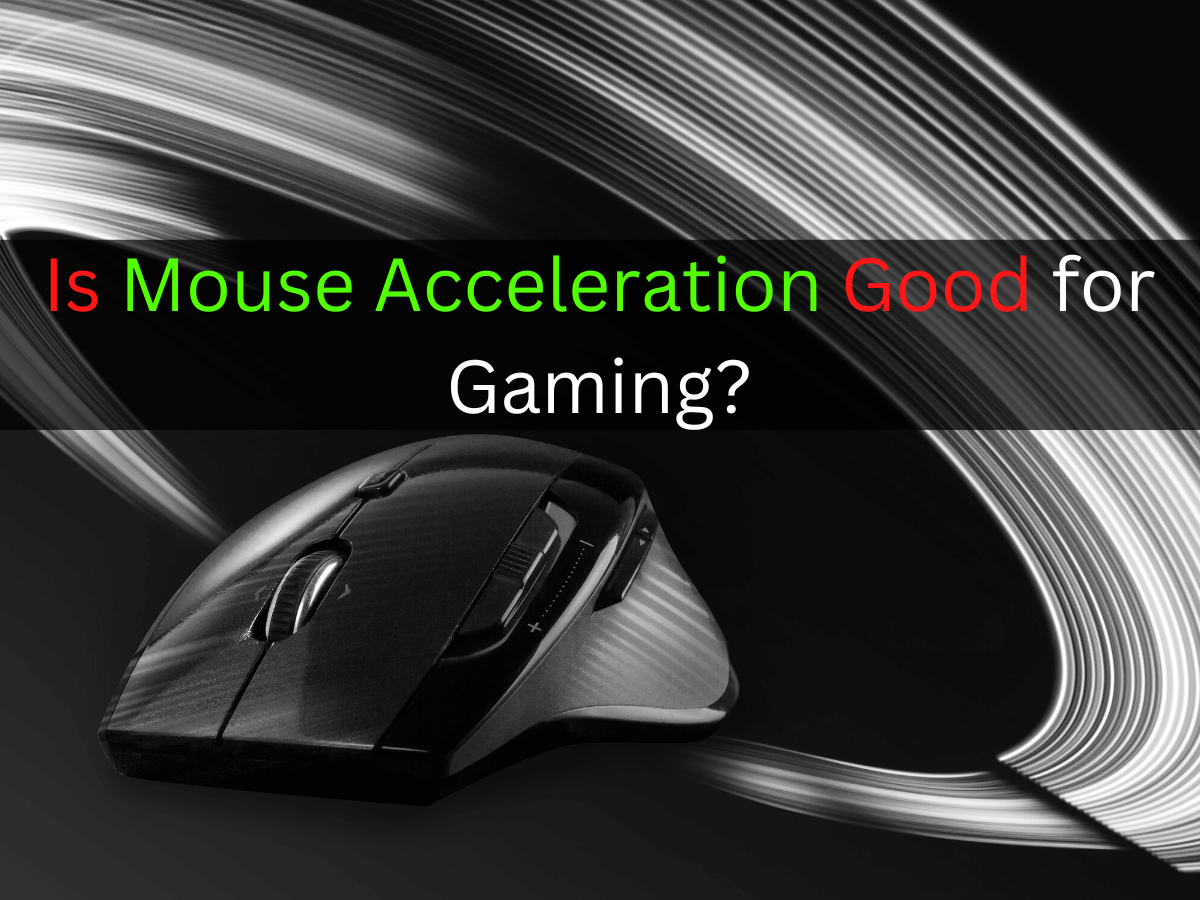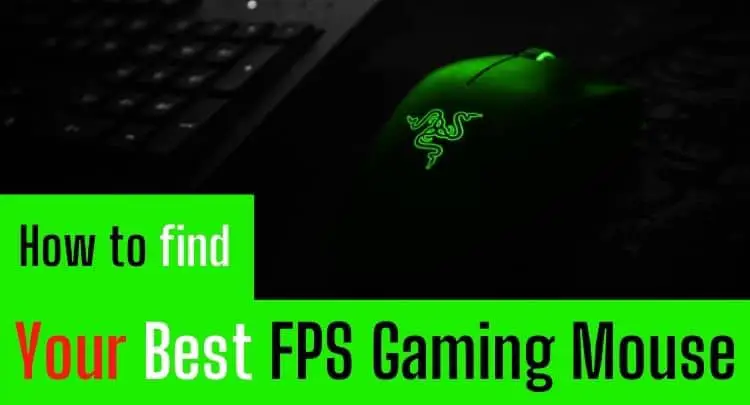Aiming is probably the most important mechanic for FPS games that a player should master. The mouse, as an input device, plays the most crucial role. With the configuration of the mouse settings, you lay the foundation for your in-game performance. Every FPS player has tested whether he prefers low sensitivity or high sensitivity. Both have advantages and disadvantages. Mouse acceleration can combine the benefits of both settings.
The mouse acceleration function is always harmful if it is not limited to the top. With limitations, mouse acceleration is a valuable setting to combine the low sensitivity of regular aiming and the high sensitivity of flick-shot aiming. However, with this restriction, muscle memory is built up after getting used to it, just like without mouse acceleration.
Every Tips and Tricks Guide for First-Person Shooters says: Turn off mouse acceleration in Windows, in games, and on your mouse! Mouse acceleration is destroying your aiming. It interferes with the build-up of muscle memory, i.e., the sequence of movements stored by your muscles during aiming, leading to worse results, and almost no pro gamers play with it.
Before you try this now, turn on the mouse acceleration in Windows, and after a few tries, you ask yourself: Why is this guy telling me such crap? So let me tell you: There are three types of mouse acceleration, a few pitfalls, and the subject is more complicated than finding any proper setting between 1 and 11 (default in Windows 10/11 is 6).
So, let’s skip ahead to the topic at hand.

Note: This article was written in English. Translations into other languages may not provide the same linguistic quality. We apologize for grammatical and semantic errors.
What Types of Mouse Accelerators Are Available?
Windows Mouse Acceleration
You might think, “He’s not going to advise me to use Windows Mouse Acceleration seriously, is he?”
Do I?
Yes.
But with a bit of tweaking. With this free software by Mark C., which is available for download in this forum post (link), you can change the Windows mouse acceleration registry values. You can find a small guide on how to use the program here (link). Please save the default values first if you want to go back to the original state at the end.
You can specify four curve points in the software and thus set your mouse acceleration curve under Windows. If you set the last two points identically, you will also have a limit that works upwards. Attention, experiment with small values first. Depending on your current DPI setting, it may cost you your mouse control (because you can’t control the mouse pointer anymore). Using Windows only with a keyboard is not funny (but feasible).
Once you have saved the values, you can immediately feel the change by logging off and logging on to Windows. Of course, you should have activated the mouse acceleration in Windows before.
Unless your game automatically deactivates Windows Mouse Acceleration after startup, you can now start in-game testing.
Mouse Software Mouse Acceleration
From brand manufacturers to no-name mice – every manufacturer now comes with some fancy mouse software. Besides the bling-bling settings for LEDs, etc., you might also be able to set the mouse acceleration. However, many mice that call themselves gaming mice do not have this feature. Why? Because the common belief is that mouse acceleration is terrible. Some mice do have this feature built-in, but they can’t limit acceleration upwards. In this case: Hands off! Do your mechanics a favor.
In-Game Mouse Acceleration
Some games offer the mouse acceleration feature. If you want to use this function, find out precisely what the acceleration curve looks like. Most of the time, the curve shape is not very influential. An upper limit is also seldom offered. In this case, it is better to leave it alone. Otherwise, you will not develop muscle memory. Historically, probably only Quake has implemented a working and valuable mouse acceleration in the game. Therefore, many Quake players have this feature enabled in the game.
Driver Mouse Acceleration
A more luxurious and free piece of software for adjusting the Windows mouse acceleration can be found here (link). The appropriate instructions can be found here (link). Luxurious because you can “build” any curve you like and have it graphically displayed. Finally, an extra driver hangs between your mouse and the operating system, similar to the native Windows mouse acceleration. Many Quake Pro gamers have installed this driver instead of the popular in-game mouse acceleration to make the acceleration curve even more precise. If I had to advise you on one type of mouse acceleration, this would be it. There is only one “but” on the subject, which comes right at the chapter “Pitfalls.” Let’s get on with it first.
Honest recommendation: You have the skill, but your mouse doesn't support your aiming perfectly? Never struggle with your mouse grip again. Masakari and most pros rely on the Logitech G Pro X Superlight. See for yourself with this honest review written by Masakari or check out the technical details on Amazon right now. A gaming mouse that fits you makes a significant difference!
Adjusting Mouse Acceleration Correctly
I already mentioned above, the be-all and end-all are the cappings of the acceleration curve. Muscle memory is always built up when a movement is performed very often and always precisely the same. So if you have been playing with the same sensitivity for days, you are developing an automatism. This automatism does not only extend to aiming, i.e., bringing the crosshair to the opponent. Also, it stabilizes the click of the mouse, and the minor corrections within your hand-eye coordination, so that you will hit the headshot.
If you create an acceleration curve that increases linearly or exponentially, the fast movement (flick shot) will always look different – depending on how fast you have moved the mouse. This is where the limitation comes into play. If you tell the mouse acceleration that you want to have the same high sensitivity after a certain speed, then the mouse movement is predictable again at the end. This means that your brain can adjust the hand-eye coordination accordingly, and muscle memory is also trained.
An example of capping looks like this:

or this

At this point, let me make it explicit: The default mouse acceleration in Windows has a rather strange acceleration curve and is not limited upwards. So please never turn it on for gambling. Unless you pimp the curve with a limit and your values, the same applies to the in-game functions or from your mouse software. Look closely at how the curve looks like and how you can influence it. If you can’t set a limit to the top, don’t touch it.
You will achieve the best results with the mentioned free software, where you have very detailed settings, and the curve is also graphically prepared.
Pitfalls
You have installed the driver mentioned above (Povohat’s Mouse Acceleration Driver) and played around with it within an Aimtrainer. You have adapted the acceleration curve to yourself and are ready for the first test in your chosen game.
All sunshine? Yes and No.
You start the game, and now two unpleasant things can happen:
- You play on FACEIT, and the anti-cheat client responds. You are informed that the software is not allowed. FACEIT has decided not to allow this 3rd party software. The reason is not the function of the software or that FACEIT does not like mouse acceleration. The reason is that cheats have allegedly used this software as a gateway. FACEIT stands with this opinion rather alone because Battlenet, Punkbuster, VAC, etc., the driver is not blocked. Solution: Forget about FACEIT. Just a joke. Try Windows mouse acceleration and the corresponding tool. As long as the game itself allows Windows mouse acceleration, this way will work.
- You play Valorant, and the anti-cheat client responds. Again, the manufacturer has decided not to allow this 3rd party program. *Update*: Meanwhile, Riot has approved the driver. If you read this article, it could be that Riot has changed its mind again. The community and the developers of the software are in contact with Riot. Solution: Currently does not exist. Valorant also turns off the Windows mouse acceleration. If you have a mouse with a corresponding function in the mouse software AND allows the limitation of the acceleration curve (see above), this variant would be worth trying. Again, Vanguard may complain, depending on how strict the rules are at the moment.
Note: To make it clear once again – mouse acceleration is not cheating, and nobody – not even FACEIT or Riot – sees it that way. So you don’t risk a ban on FACEIT or in Valorant when you play through the different variants.
A little tip: If you have set a halfway reasonable acceleration curve, get used to it for a few days. Don’t force yourself to adjust the sensitivity every half hour. It’s all about finding out whether you have a good feeling about mouse acceleration or not. Then, when you see the added value for you, you can move on to fine-tuning.
Conclusion
In the end, it remains a personal preference. Still, suppose you’ve been struggling with your mouse sensitivity for years because you play a low sens for regular aiming and think with every flick shot that your mouse pad should be twice as big, or your arm will eventually go limp. In that case, mouse acceleration might be a solution. You can combine low sensitivities for slow movements and high sensitivities for fast movements (e.g., flick shots). If the mouse acceleration is limited upwards, you can build up muscle memory like if you had deactivated mouse acceleration.
Because everyone is different, mouse acceleration can help you massively improve your results. On the other hand, you may also notice that it doesn’t feel right after a few hours. In that case, it was worth a try, but you should deactivate the function again.
Due to years of saying that mouse acceleration is terrible per se, there are very few pro gamers who use this setting – but there are. So don’t let the false myth stop you, and test if it takes your aiming to the next level. But remember, even knowing that aiming is the most important mechanic for FPS games, you have to train the other ones, too. So in this post, we show you which mechanics you need to master:
If you don’t even know which is the best gaming mouse for you, then check out this article:
If you have a question about the post or pro gaming in general, write to us: contact@raisyourskillz.com.
If you want to get more exciting information about becoming a Pro Gamer and what relates to Pro Gaming, subscribe to our newsletter here.
GL & HF! Flashback out.




